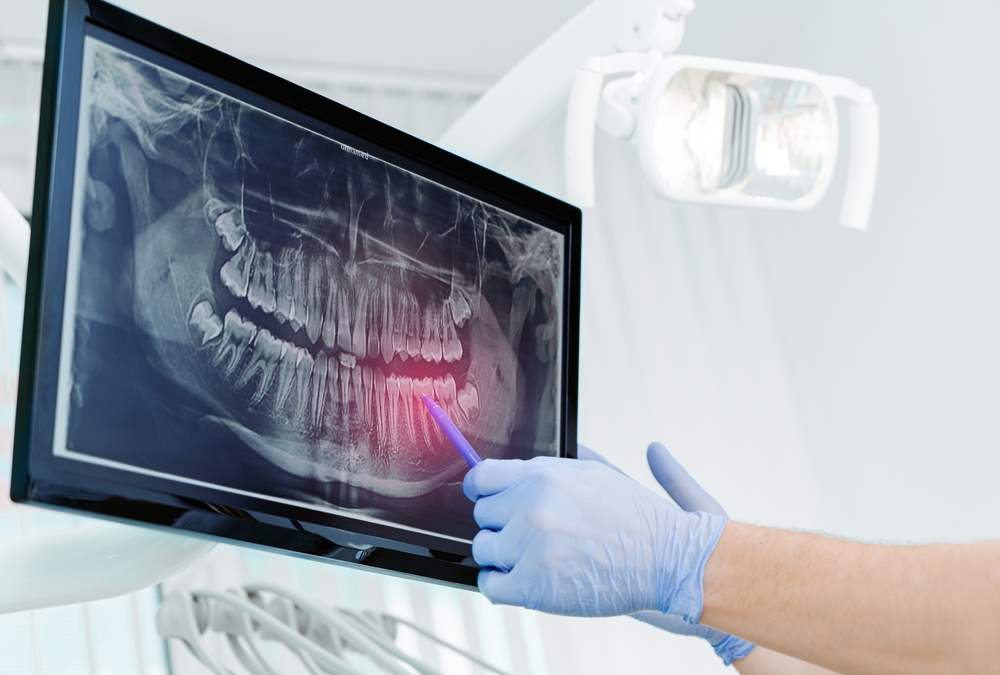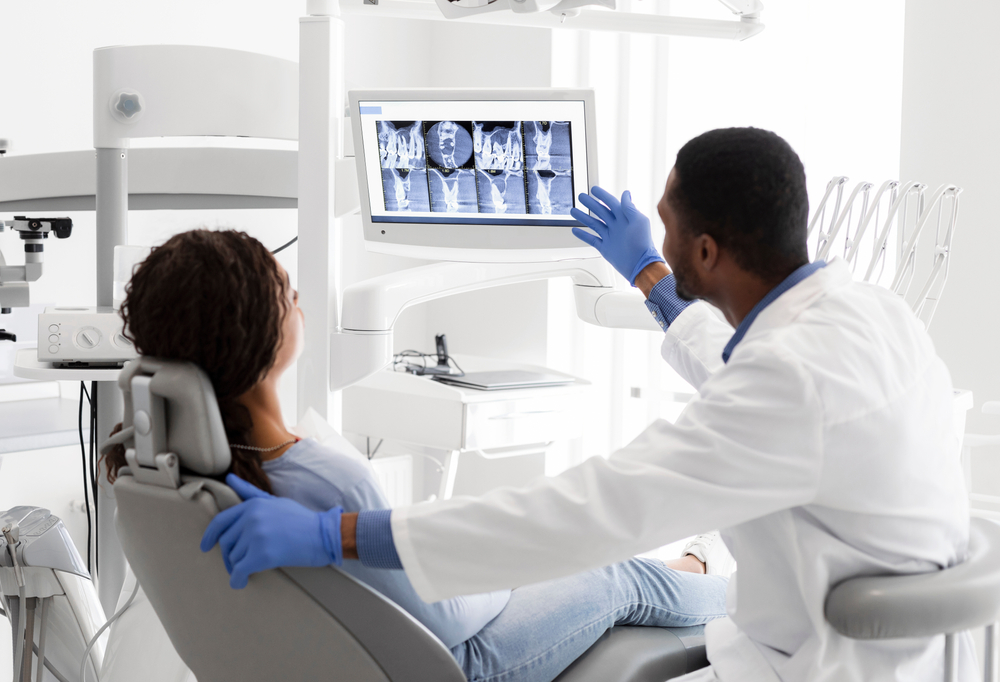Dental X-Rays
 X-rays take pictures called radiographs that show Dr. Schmidt the interior of dental structures and tissues, like teeth, gums and bones. These allow him to make a more thorough examination than is possible with the naked eye, and can help spot problems that would otherwise go undetected and untreated.
X-rays take pictures called radiographs that show Dr. Schmidt the interior of dental structures and tissues, like teeth, gums and bones. These allow him to make a more thorough examination than is possible with the naked eye, and can help spot problems that would otherwise go undetected and untreated.
How do x-rays work?
More x-rays pass through softer tissues than harder tissues, so softer areas like gums and cheeks look darker on an x-ray. If you put an impenetrable object like a piece of lead between the x-ray machine and the film, no x-rays would get through that spot, and it would leave a totally white impression. Similarly, the strong dense enamel of your teeth looks very light on the x-rays, and areas of softer decay look darker. Dr. Schmidt has been trained to read x-rays to determine if there are any signs of problems.
Why do I need x-rays?
Some dental problems are hard or even impossible to see with the naked eye. Regular x-rays will help spot problems, and when compared to previous x-rays, will show any unusual changes or developments. Dr. Schmidt wants to make the most thorough examination possible so that problems can be addressed and reversed at an early stage. This will help preserve your original teeth, and save you the time, trouble and expense of extensive dental problems.
How often do I need x-rays?
Dr. Schmidt will determine how often you need x-rays depending upon your age and your dental history. An adult without a history of dental problems may go two to three years between x-rays, while a child or an adult prone to decay will need them more frequently.
 Are x-rays safe?
Are x-rays safe?
X-rays are safe because you aren’t exposed to this radiation very often or for very long. To minimize the risks even more, Dr. Schmidt will make sure that the rest of your body is covered with a lead apron. Large doses of radiation could be harmful however, so people who are around x-rays all the time leave the room during the procedure.